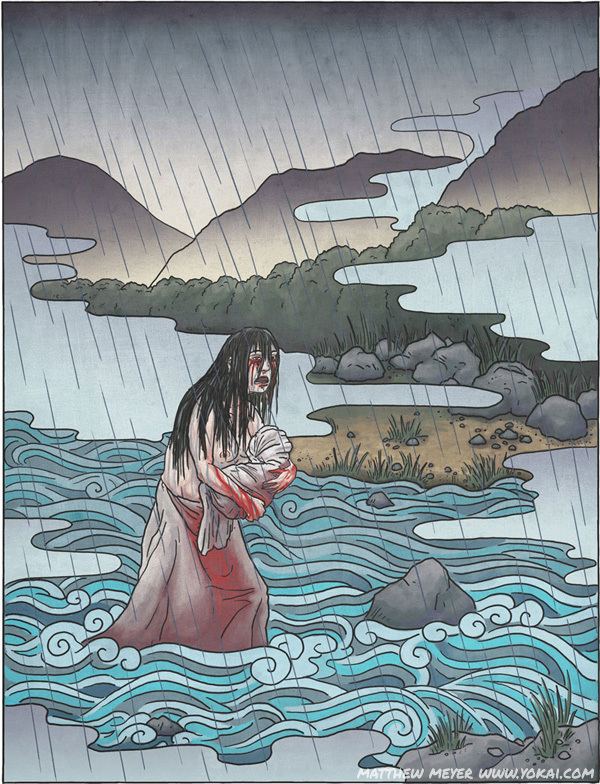 | ||
Summer of ubume trailer
Ubume (産女), a Japanese yōkai, appears in folk stories and literature as an old woman or crone, with a child in her arms, imploring the passerby to hold her infant, only to then disappear. As legend has it, the weight of the child increases by degrees, until the bewitched “child” is revealed to be nothing more than a huge rock or boulder. The first version of this sort of tale was related by Urabe Suyetake, servant of Raiko.
Contents
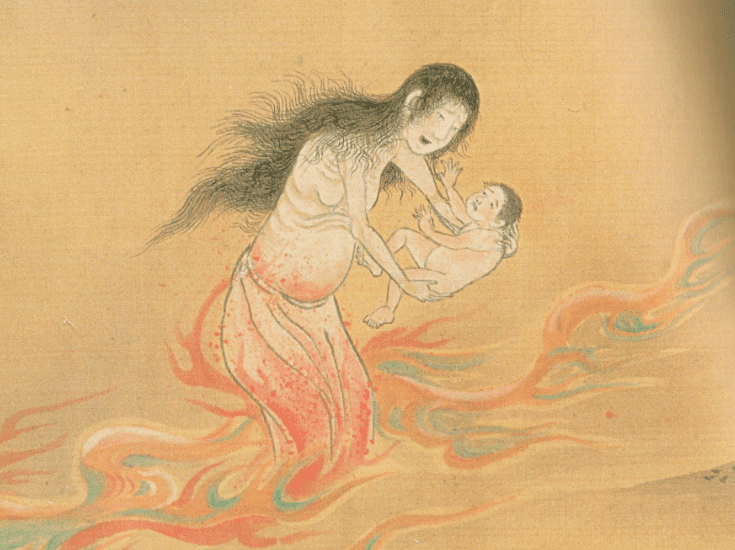
Ubume 2016
Ubume in folklore
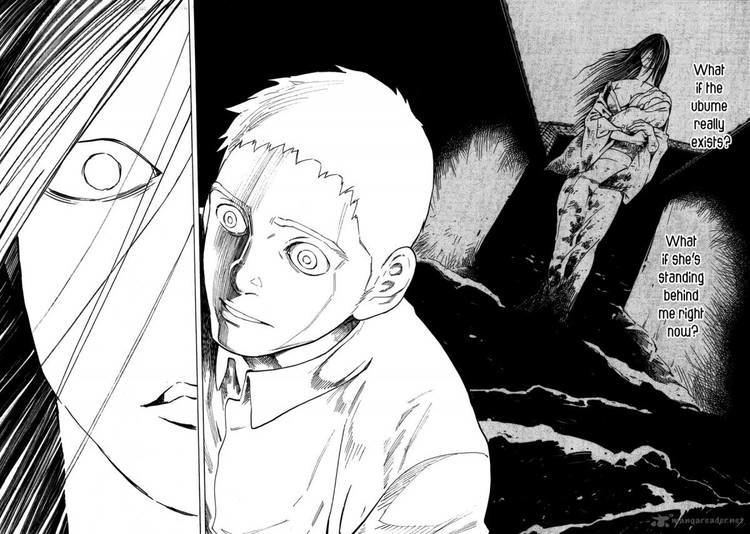
Originally the name for a kind of small sea fish, in Japanese folklore the term is now applied to the ghost of a woman who had died in childbirth, or ‘‘birthing woman ghost.’’
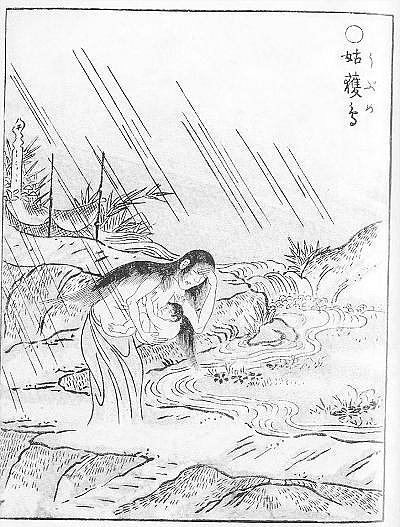
Typically, the Ubume asks a passerby to hold her child for just a moment and disappears when her victim takes the swaddled baby. The baby then becomes increasingly heavy until it is impossible to hold. It is then revealed not to be a human child at all, but a boulder or a stone image of Jizo.
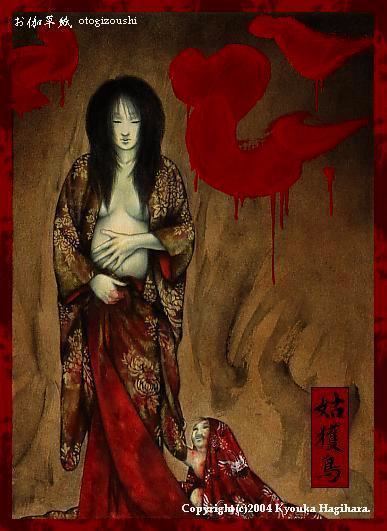
Many scholars have associated the Ubume with the legend of the hitobashira, where a sacrificial mother and child "are buried under one of the supporting pillars of a new bridge."

The Shoshin’in Temple, according to scholars, is where local women come to pray to conceive a child or to have a successful pregnancy. According to Stone and Walter (2008), the origins of the temple’s legend, set in the mid-sixteenth century, concern:
... a modern statue of Ubume, displayed once a year in July. At this festival, candy that has been offered to the image is distributed, and women pray for safe delivery and for abundant milk. The statue, which is clothed in white robes, has only a head, torso, and arms; it has no lower half.Ubume in literature
Stories about Ubume have been told in Japan since at least the twelfth century.
The early seventeenth-century tale collection Konjaku hyaku monogatari hyoban says of the Ubume:
When a woman loses her life in childbirth, her spiritual attachment (shūjaku) itself becomes this ghost. In form, it is soaked in blood from the waist down and wanders about crying, ‘Be born! Be born!’ (obareu, obareu).Natsuhiko Kyogoku’s best-selling detective novel, The Summer of the Ubume, uses the Ubume legend as its central motif, creating something of an Ubume 'craze' at the time of its publication and was made into a major motion picture in 2005.
Ubume in art
Tokugawa-era artists produced many images of Ubume, usually represented as "naked from the waist up, wearing a red skirt and carrying a small baby."
Other illustrations of Ubume are from Toriyama Sekien’s late eighteenth-century encyclopedia of ghosts, goblins and ghouls, Gazu Hyakki Yagyō.
